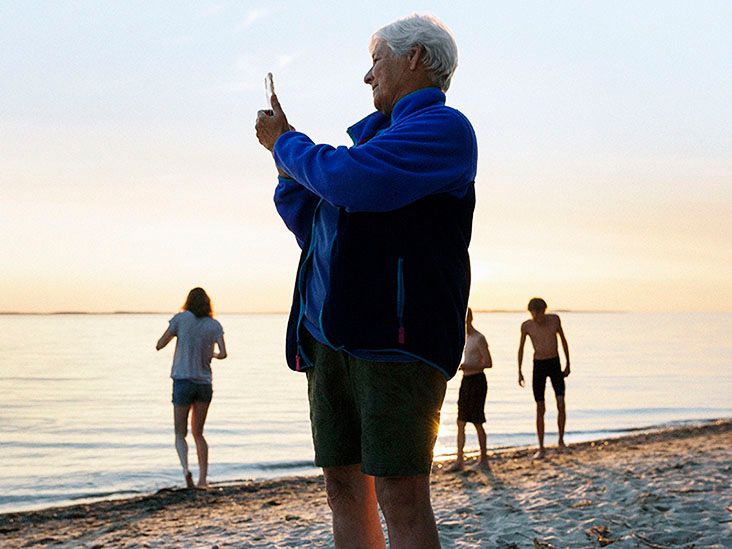Alright, let's be real for a second.
You've reached that golden stage of life where you've earned the right to chase the sunshine. One weekend you're sledding with grandkids in Michigan, the next you're sipping lemonade on a screened-in porch in Naples. That's the snowbird lifeand it's pretty sweet.
But here's the quiet worry no one talks about: What happens to my healthcare when I split my time between states?
It's not exactly beach reading, but if you're over 65 and spending months away from your "home" address, understanding Medicare for snowbirds isn't just smartit's essential.
Luckily, I've helped plenty of folks just like you navigate this. And guess what? You've got options. Some plans follow you like a loyal dog. Others? Not so much.
Let's walk through itnot as an insurance robot, but as someone who gets it. Because your health doesn't take a vacation just because you do.
How It Works
Here's the thing: Medicare doesn't care that you're a snowbird. It only cares where you're officially "based."
That means you pick one state for your Medicare enrollmentusually where you're registered to vote, pay income tax, or keep your driver's license. That's your anchor.
Butand this is a big butyour coverage can still travel with you. How well it travels? That depends entirely on your plan type.
Think of it like booking a flight. Original Medicare is like flying first class on any airline: you can hop on anywhere in the U.S. with no network limits. Medicare Advantage? That's more like a loyalty program with blackout dates and restrictions. Great when it worksfrustrating when it doesn't.
So let's unpack your real choices.
Original Medicare
Yes, Original Medicare (Parts A and B) works in all 50 states. Period. Whether you're hiking in Colorado or recovering from a flu in Fort Lauderdale, any doctor or hospital that accepts Medicare has to treat you the same wayno matter where you're registered.
That's huge.
It means you're never "out of network." No surprise bills just because you're in a different time zone. Your copays, deductibles, and coverage rules? Same across the country.
Butand I hate to be the one to say thisnot all doctors are taking new Medicare patients, especially in snowbird hotspots like Arizona, Florida, and Texas. The demand is through the roof, and some practices haven't expanded in years.
So yes, the doctor accepts Medicare. But can you actually get an appointment? That's the million-dollar question.
Can I see any doctor with Original Medicare as a snowbird?
The short answer? Technically, yes. Practically? You've got to plan ahead.
Here's what I tell my cousin Linda, who winters in Fort Myers: "Don't wait until your knee starts acting up. Find your doctors while you're still feeling good."
She uses the Medicare.gov Physician Compare tool every fall, searching for primary care providers and specialists who are not only in-network (they all are with Original Medicare!) but also accepting new patients.
She calls. Confirms. Even asks, "Will you still be taking patients in January?" Some say yes. Some don't.
Her advice? "Make a list. Bring it with you. Think of it like packing socksboring, but necessary."
Medigap Plans
Now, let's talk about your secret weapon: Medigap (Medicare Supplement) plans.
If you pair Original Medicare with a Medigap planlike Plan G or Plan Nyou gain something priceless: predictability.
No more stressing over coinsurance for a hospital stay in Georgia or a lab test in Oregon. Medigap covers those costs just like it would back home. Nationwide. No fuss.
And here's the kicker: because Medigap plans are standardized by the federal government, a Plan G in Maine is the exact same as a Plan G in California. The benefits don't change. Only the price might.
The catch? You can only buy Medigap in your state of primary residence. And your enrollment window is limitedusually within six months of turning 65 and enrolling in Part B.
If you miss that window? It gets harder. Some insurers might require medical underwriting. So don't wait.
Emergency Travel Coverage?
Now, here's something that always makes people perk up: certain Medigap plans actually cover emergencies outside the U.S.
Specifically, Plan G and Plan C (if you enrolled before 2020) include foreign travel emergency coverage. It covers up to $50,000 for emergencies like a sudden heart attack in the Bahamas or a hiking accident in Canada.
It kicks in after a $250 deductible and only applies during your first 60 days abroad. And it's only for emergenciesnot routine care.
But imagine this: you're on a weeklong cruise, and something serious happens. Without this coverage, you could face bills over six figures. With it? You're protected.
One of my neighbors, Rick, used it after falling in Portugal. He said, "I didn't even know I had it. But when the ambulance showed up, I was so glad it was there."
Advantage Plans
Now let's talk about Medicare Advantage (Part C).
I'll be honestthis one's trickier for snowbirds.
Most Medicare Advantage plans are HMOs or local PPOs with tight networks. That means if your Arizona dermatologist isn't in your plan's system, you'll either pay full priceor not be covered at all.
I remember a client, Marie, who got a nasty sunspot while wintering in Florida. She went to a well-known skin cliniconly to find out it wasn't in her HMO network. Her bill? Over $800. She was shocked.
So can Medicare Advantage work for snowbirds? Yesbut only if you're strategic.
Snowbird-Friendly Advantage Plans?
Good news: some insurers design plans specifically for people like you.
For instance, UnitedHealthcare offers PPO plans with broad networks across common snowbird routeslike New York to Florida or Illinois to Arizona. These aren't local plans. They're built for movement.
And if you live in a place like Minnesota or Iowa, you might have access to something even better: a Medicare Cost Plan.
These are rare nowthanks to federal changesbut they're a dream for travelers. You can use Original Medicare when you're away (which is accepted everywhere), and switch to the plan's network when you're back home. Some even offer international emergency coverage.
If you're eligible, it's worth exploring. Just head to the Medicare Plan Finder, plug in your zip, and look for "Medicare Cost Plan" under plan types.
And if you're considering any Advantage plan as a snowbird, ask yourself:
- Are there in-network providers in both locations?
- Does emergency care count out-of-state?
- How much more will I pay if I go outside the network?
Don't assume. Verify.
Part D Coverage
Now, what about prescriptions?
Medicare Part D is your go-to for medications, and the good news is most plans have national pharmacy networks. So CVS, Walgreens, Walmart? You're probably covered at any of them, no matter the state.
Butand there's always a butnot all pharmacies are created equal.
A small independent pharmacy in your beach town might not be in your plan's network. Or worse, your plan might only allow 90-day fills through mail order, not retail.
I've seen retirees show up in Arizona, ready to refill their blood pressure meds, only to be told, "Sorry, we're out-of-network for maintenance drugs." Cue the panic.
Finding Pharmacies in Your Second State
Here's how to avoid that headache:
- Check your plan's pharmacy directory before you leave. Search by your winter zip code.
- Use mail-order for long-term prescriptions. Get a 90-day supply shipped to either home.
- Download your plan's app. Most let you search nearby pharmacies in real time.
And one more tip: call ahead. Seriously. A five-minute phone call can save you hours of stress later.
Medicaid and Employer Plans
Let's get into the messy part: Medicaid and employer-sponsored retiree coverage.
Short version? They don't travel well.
Medicaid is state-specific. That means if you're on Medicaid in Ohio, it's not going to pay for your doctor visit in South Carolina. A few states cover emergency care out-of-state, but routine visits? No.
Same with many retiree health plans. Somelike those from big companies with Cigna or Aetna PPOsoffer nationwide access. Others only cover care in your home state.
So what do you do? Call your benefits administrator. Ask: "If I see a doctor in my second home, will this plan cover it? Do I need a referral?"
Don't settle for a vague answer. Get it in writing if you can. Because you don't want to learn the hard way.
Changing Plans
What if you decide to make your winter home your permanent one?
Great news: if you permanently move to your second state, you qualify for a Special Enrollment Period (SEP). That means you can drop your old plan and enroll in a new onewithout waiting for Annual Enrollment.
You can make the switch starting the month before your move, all the way up to two months after. Just make sure you update your address with Social Securityeither online at SSA.gov or by calling 1-800-MEDICARE.
But what if you're just going back and forth every year?
Sorryno SEP for seasonal moves. Medicare expects you to plan ahead and pick a plan that works year-round.
That's why I always say: if you're a snowbird, go for portability. Original Medicare + Medigap is your best friend.
What If I Have a Cost Plan?
If you're one of the lucky few with a Medicare Cost Plan, give yourself a high-five.
These plans are like the Swiss Army knife of Medicare. You get the freedom of Original Medicare when you're traveling, plus network benefits at home. Some even cover emergency care abroad.
They're rare nowonly offered in a handful of states like Minnesota, Wisconsin, and the Dakotasbut if you're eligible, don't overlook them.
Key Tips
Alright, let's bring it home. Here are five things every snowbird should do before they pack their winter bag:
| Step | Action |
|---|---|
| 1. Set your base | Pick your primary residencewhere you vote and pay taxes. |
| 2. Choose wisely | Opt for portable coverage like Original Medicare + Medigap or a PPO Advantage plan. |
| 3. Confirm access | Verify doctors and pharmacies in your winter state accept Medicare and are taking new patients. |
| 4. Review Part D | Double-check pharmacy networks and mail-order options. |
| 5. Carry info | Keep your Medicare card, plan details, and insurer number with youon your phone and in your wallet. |
When to Get Help
Look, I won't pretend this is easy. Medicare has more moving parts than a suitcase on a broken wheel.
If you're feeling overwhelmed, that's okay. You don't have to go it alone.
There are free, unbiased experts out there. Your state's SHIP program (State Health Insurance Assistance Program) offers one-on-one counseling. Licensed agents can compare plans in both your states. And financial advisors who specialize in retirement healthcare? They're worth their weight in gold.
You can also call 1-800-MEDICARE or explore resources at SHIP's national site.
Final Thoughts
Being a snowbird isn't just about warmer weather or slower sunsets. It's about freedom. Choice. Living life on your terms.
But that freedom means nothing if you're stressed about getting care when you need it.
The truth is, Medicare for snowbirds can work beautifullyespecially if you're on Original Medicare and a Medigap plan. It's simple, portable, and predictable. No games.
Medicare Advantage? It can work, but only if you're pickychoosing PPOs with broad networks or rare Cost Plans.
Either way, the key is this: plan ahead.
Do your homework. Talk to real people. Verify. Double-check. Because peace of mind isn't something you buyit's something you build.
So go ahead. Book that flight. Pack that beach hat. But before you do, take an hour to get your coverage straight.
Because the best kind of vacation? The one where you don't have to worry about a single thing.
And if you're still not sure what's right for youhey, that's normal. Drop a question below, or reach out to a local expert. You've got this.
FAQs
Does Medicare Cover Snowbirds in Different States?
Yes, Original Medicare covers you anywhere in the U.S., regardless of your home state. Just make sure doctors accept Medicare and are taking new patients.
Can I Use Medigap If I’m a Snowbird?
Yes, Medigap works nationwide with Original Medicare, covering coinsurance and deductibles in any state—ideal for snowbirds seeking predictable costs.
Do Medicare Advantage Plans Work for Snowbirds?
Some do—PPO and certain Cost Plans offer broad or national networks. HMOs often limit care to your home state, so check network coverage carefully.
Is Prescription Coverage Valid in My Winter State?
Most Part D plans include national pharmacies like CVS and Walgreens, but always confirm your local pharmacy is in-network before you travel.
Can I Switch Medicare Plans as a Snowbird?
You can only switch plans during specific enrollment periods unless you move permanently, which triggers a Special Enrollment Period for new coverage.
Disclaimer: This article is for informational purposes only and does not constitute medical advice. Always consult with a healthcare professional before starting any new treatment regimen.
Related Coverage
Coping with retinol irritation like burning, redness, dryness? Learn how long symptoms last, when to worry, and get aftercare tips to heal skin post inflammation....
Facing Medicare problems? The Medicare Ombudsman helps resolve unresolved issues with coverage, billing, and claims....
Learn how to enroll in Medicare using SelectQuote’s services and make informed decisions about your healthcare coverage....
Soothe anxiety and boost resilience with earthy, aromatic ashwagandha tea. Learn how the Ayurvedic adaptogenic herb relieves stress and fatigue plus simple homemade preparation....
Wondering which custodial care service is right for you or your family in 2024? Check out our top 5 recommendations, including nursing homes, assisted living, and more. Find the best fit for your loved one's needs....
Stay mentally sharp as you age with proven strategies for brain health including exercise, diet, and social engagement....
Dancing for seniors boosts physical health, mental well-being, and social connection. Find safe, joyful ways to start today....
Compare Michigan Medicare plans and choose the right coverage for your health needs. Get support and save money....
Learn how HRA and Medicare can work together to reduce your healthcare costs. Find out which HRAs are compatible and what expenses are covered....
Tai chi gently improves flexibility through flowing movements like knee rotations, ankle sways, and hip circles. Research shows it significantly reduces falls in the elderly....









